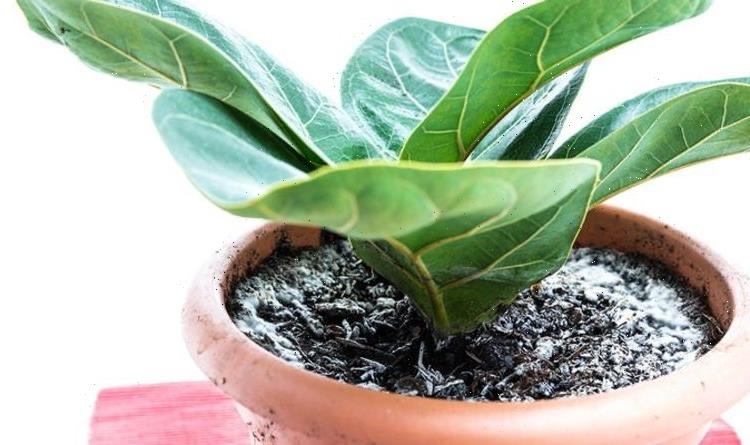
Houseplants: Expert’s unusual household remedy to get rid of mouldy soil ‘Doesn’t damage!’
11/15/2021
We use your sign-up to provide content in ways you’ve consented to and to improve our understanding of you. This may include adverts from us and 3rd parties based on our understanding. You can unsubscribe at any time. More info
Throughout the year, the care and attention houseplants need alters. As winter draws closer, Express.co.uk spoke to Richard Cheshire, Patch’s plant Doctor about the general do’s and don’ts. So, if you’re finding small black flies inside, or mould on soil, here’s what you can do to get your plants happy and thriving once more.
During the summer, plants need a lot more water to deal with higher temperatures and sunlight.
So, when it comes to the cooler months of the year it can be tricky working out how much care indoor plants need.
As a result, a few things can happen to a plant when its care routine doesn’t accommodate dormant periods, central heating and less light.
Luckily, Richard Cheshire, Patch’s plant Doctor is on hand to get a few things in order.

Small black flies and how to get rid of them
“Fungus gnats usually find their way in the soil of the plant through overwatering and they simply love moist soil, which is where they lay their eggs,” Richard explained.
“You will need to tackle the larvae and adult flies to get rid of them.
“One easy way to catch the flies is to trap them with yellow stickers by placing them around the pot.
“To remove the larvae, you can apply nematodes, which are microscopic larvae that feed on the fungus gnat eggs in the soil to tackle the issues at source.
“These nematodes come in a powdery form and are mixed with water that can then be used on the plant,” he added.
Mouldy soil
“The presence of mould on the top soil is a result of high humidity,” Richard said.
“It does not harm the plants in any way, but it could in some cases show that you have been overwatering.
“In order to remove it, you can scrape the top soil with a spoon, and in order to prevent it from making a reappearance, sprinkle some cinnamon to cover the top soil of the plant.
“This will kill the mould and won’t do any damage to the plant.”
He continued: “At this time of year, plants begin to slow down their growth and take much longer to drink their water so make sure that your plant has access to enough light and warmth through the day to help prevent the conditions required for mould to form.”
View this post on Instagram
A post shared by Patch(@patchplants)
Best soil for indoor houseplants
“Most houseplants will do well with a multipurpose compost mix,” Richard revealed.
“But make sure that it is peat free to protect one of our planet’s greatest carbon stores.
“Peat-free compost will use more sustainable materials like coconut coir to regulate the moisture around the roots of your plant.
“Make sure you mix two thirds of compost mix, to one third of drainage material like pearlite to help it drain freely and improve aeration around the roots.”

Patch’s top indoor plants
Looking to add a new plant baby to your collection? Or perhaps you’re looking to gift one this Christmas? Patch has a selection of great indoor plants no matter the owners skill.
Kentia Palm – Big Ken is a tough lad who won’t be phased by difficult growing conditions.
He quite enjoys a bit of shade and because he has long leaves that grow from a narrow base, he’s great for filling a corner without taking up much floor-space.
Place him in front of a blank wall, and his arching fronds will cast beautiful shadow.
Snake Plant – Susie the snake plant has an impressive list of nicknames, including “Viper’s Bowstring hemp”, “Saint George’s Sword” and “Mother-in-law’s tongue”.
This hardy house plant is a great option for new plant parents, as she doesn’t need much watering and will tolerate neglect easily.
She also has a magic power: she releases oxygen at night, which is said to help you drift off to sleep.
Peace lily – Pippa the peace lily can add a bit of zen to your space thanks to her soft, dark green foliage and year-round flowers.
She prefers a shady spot, making her a great option to brighten up those empty corners in your home.
Source: Read Full Article

